DIY SOLAR PANELS | UK GUIDE
DIY SOLAR PANELS | UK GUIDE
We are happy that Renogy's DIY community continues to grow with more and more members choosing to trust our products as their go-to choice. This article is dedicated to all you DIY-ers, cutting costs and saving the planet with each solar system you install.
Now, if you are thinking of setting up a DIY home solar system, this article will help you make the best DIY solar decisions and avoid making common mistakes.
Here, we will answer most of your burning questions about DIY solar panels, including:
- Can you install solar panels yourself?
- How much does it cost to install solar panels?
- How to install a DIY solar panel system at home?
- How to size solar panels for your home?
- What are DIY solar panel kits?
- The Pros and Cons of DIY solar panels
- DIY solar panel building regulations for home
- Do I need permission for solar panels?
- The Importance of Monitoring and Maintenance for DIY solar
Let's begin.
* Please note that the DIY solar panels in this article are manufacturer-made panels suitable for DIY installations. Not solar panels built from scratch by individuals.
Can you install solar panels yourself?
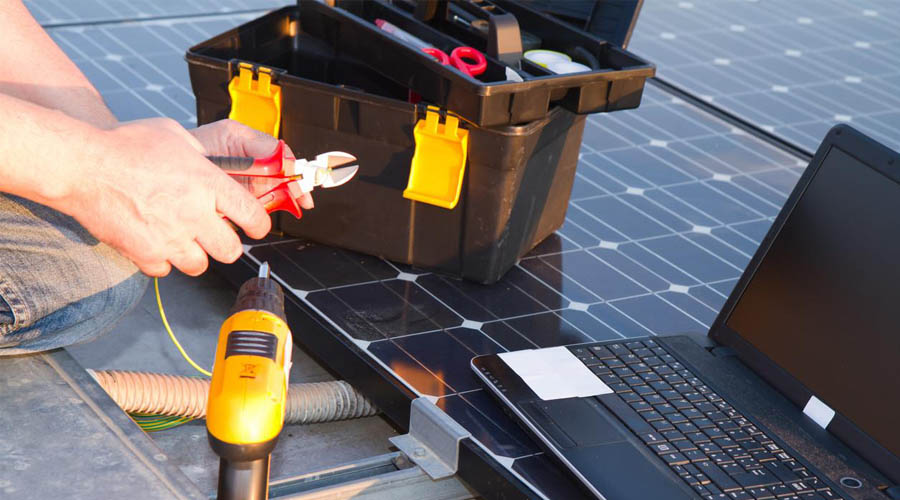
The cost of designing, buying, and installing solar for the average household in the UK is around £6000. Of that £6000, approximately 10% goes to the cost of hiring a pro-installer. In other words, hiring a professional installer costs at least £600, which is concerning if you're on a budget.
As a result, you end up wondering if you can install solar panels yourself.
And the answer is YES. You can DIY (do-it-yourself) install your own solar panels.All you need to do is invest your time, energy, and a little bit of elbow grease.
This lowers your cost of going solar by approximately 10% or more. For most homeowners, this is a worthwhile incentive to invest their time and efforts.
However, before going the DIY solar panels' route, here's what you need to know:
1. If you're not as agile or handy as you used to be, we highly recommend hiring an installer, as rooftop solar installations can be dangerous if you are not careful. No amount of money saved is worth risking your well-being.
2. Do not buy substandard components because they're cheap. Instead, buy premium parts that are priced reasonably. Doing so ensures you get the best value for your money. Without question, we recommend buying renogy solar parts directly from our
3. For large solar installations, it's highly recommended to hire a professional installer.
4. In areas with strict PV regulations, a professional installer can help you process permits and other necessary paperwork. Some utilities need a certified electrician's signature as proof your system can be connected to the grid safely. Besides, when you apply for a Smart Export Guarantee (SEG) from your energy provider, they might need an MCS certification and a DNO (district network operator) approval.
How much does it cost to install solar panels?
The cost of installing solar panels will vary depending on:
1. The size of your system
2. Type of your installation
3. Where you live
4. The installer you choose
On average, the cost of hiring a professional installer can range anywhere from £600 to a few thousand pounds. According to the EnergySage Solar Marketplace, the average cost of labour when installing a solar system is approximately 10% of the cost of all your components. If you wanner know how much solar panels are in the UK, click the link.
So if your components cost around £6000, then the cost of installation will be around £600. Please note that this figure is an estimate and may vary, so it's best to cross-check with an installer near you.
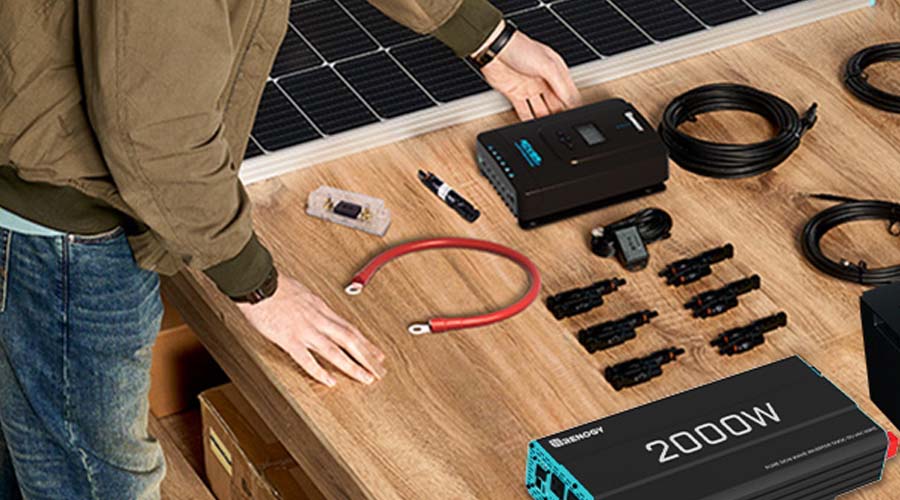
DIY solar panel installation process
There are a few stages you need to take care of before you start your DIY solar panel installation process.
One of the stages is quite obvious, which is buying the equipment you want to install. However, other lesser-known but important stages are:
1. Energy Usage Calculation (load or amount of electricity you use each day)
2. Peak Sun Hours Research in UK
3. Solar Panel System Sizing
4. Battery Storage Sizing
How to install a DIY solar panel system at home?
The installation process for a DIY solar panel system can be broken down into 6 basic steps:
Step 1: Calculate Your Daily Energy Usage
If you're connected to the grid, and want to find out how much you use daily, you need to look at your utility bills. On your utility bill, you will find the amount of Wh (Watt-hours) or kWh (kiloWatt-hours) used that month. For even better results, use the bills for the last 3 months to work out an average monthly usage. Once you have your monthly usage, divide that figure by the number of days in a month to find your daily usage.
Alternatively, you can sum up each of your device's wattage and the number of hours used to find out the total energy you use daily.Our online solar panel calculator can help you here.
Step 2: Design Your System
You need to decide if you are going to substitute all or part of your daily energy usage with solar power. You can choose to build a completely offgrid solar system that will power all your devices without any help from the grid.
Or, you can choose to build an on-grid solar system, also known as a grid-tied system, that only substitutes a fraction of your daily usage with solar power.
If you are building an off-grid system, you definitely need a solar lithium battery. On the other hand, an ongrid system can do without a battery bank due to the Smart Export Guarantee (SEG). The only drawback of an on-grid solar installation without solar battery storage is that you won't have any backup power during emergencies.
Step 3: Size Your Solar Panels
Once you know how much power you want to generate with solar, you can calculate how many solar panels you need to produce that much power. We will explain how to size your solar panels later in this article.
Step 4: Purchase Quality Solar Components
After determining your daily usage and optimal panel output, you can start buying all the parts you will need for your installation, including:
1. Solar panels (Collection)
2. Charge controllers (Monitoring)
3. Solar Batteries (Storage)
4. Solar Inverters (Usage)
5. Connectors, Fuses, and other accessories
Step 5: Install Your Railings, Mounts, and Components.
Once you've gathered all your components, you can start preparing the areas where you will install your components. This usually involves:
1. Mounting the railing for your panels on the roof
2. Creating or clearing a suitable space for your inverter and battery bank,
After preparing the installation zones, install the components. This involves:
1. Lifting solar panels onto the roof and bolting them to the railings;
2. Screwing your inverter onto the wall;
3. Finding a safe space for your batteries. The area shouldn't be exposed to direct sunlight nor extreme temperatures (hot/cold);
4. Installing the joining cables and connectors.
Step 6: Connect your solar to your home’s distribution box
Once you know which circuits you want to power with solar power, you can choose to join or replace the wires with the power supply of your choice. For example, you can choose to power only your lights and a few sockets, or you can choose to power all your circuits.
How to size solar panels for your home?
To size solar panels for your home, you need to know two things:
1. Your daily energy usage
2. Number of peak sun hours in your area.
Once you have these figures, you can calculate two things:
1. The total power output required from your panels each peak hour. How? Dividing your daily usage by the number of peak sun hours. The answer you get is the amount of power your panels should generate during each peak sun hour.
2. The number of panels at each wattage you need to buy to meet the demand. How? Divide the above figure (hourly power needed) by your chosen panel's wattage. For example, if hourly power is 3000Wh and you choose a 300W panel, you will need 10 (ten) 300W solar panels to meet the 3000W hourly demand.
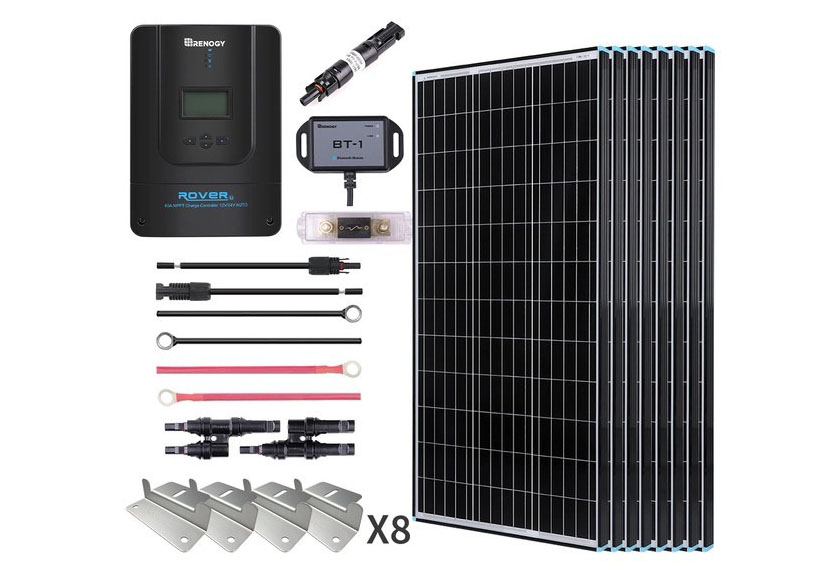
What are DIY solar panel kits?
Solar parts come in different sizes (capacities, wattages, etc.) and they can only work well when matched with other parts of a matching size. Think of it this way, when you're shopping for clothes in a store with different clothing sizes, you need to pick a t-shirt, jeans, and shoes suited for your size and with each other.
This is also the case when you are shopping for solar parts that come in different sizes. Therefore, you need to pick solar panels, inverters, batteries, and other parts that are compatible with each other and suitable for your needs.
That's where DIY solar panel kits come in.
A DIY solar panel kit is a set of compatible solar parts that are already hand-picked for you, taking the hassle out of searching for the right parts.
Buying the right solar kit will save you money and reduce the time it takes you to set up a working solar installation. It also helps you avoid rookie mistakes or costly trial-and-error purchases.
Renogy has many sizes and types of DIY solar kits;examples include:
1. Starter Kits
3. Premium Kits
Each of these kits is carefully configured to fit a variety of situations. We also have flexible solar kits suitable for RV or Marine use.
If you think DIY solar kits are just what you need, check out this link to all of Renogy's solar kits.
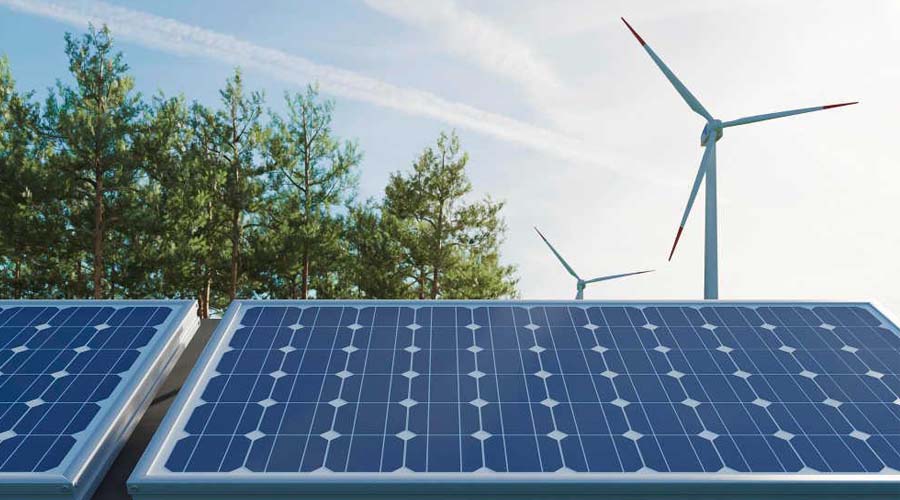
The Pros and Cons of DIY solar panels
As with most things, there are two things involved when setting up your DIY home solar panels -- the pros and cons.
It's up to you to decide if the advantages of DIY solar panels more than offset their disadvantages.
Pros of DIY solar panels
1. Reduces your dependence on the grid supply and gives you more control over your energy.
2. Lowers your energy costs as solar is now a cheaper energy source than the grid.
3. You get an intimate knowledge of your system during the installation and can troubleshoot most problems.
4. Saves money that would otherwise be spent on hiring an installer. You can re-invest this money elsewhere, e.g., buying more components to build an even better system.
5. Suitable for most applications, including homes, businesses, RVs, boats, etc.
6. Provides an emergency or independent power supply that's usable even when there's no grid power.
Cons of DIY solar panels
1. It might reduce your equipment warranties depending on the terms and conditions of your manufacturer.
2. Requires investing your time and effort to learn about how to work with electricity and solar equipment.
3. DIY installation might be impossible in some regions due to prohibitive local laws.
4. It's more challenging for homeowners outfitting large solar systems. In that case, we recommend hiring a professional installer.
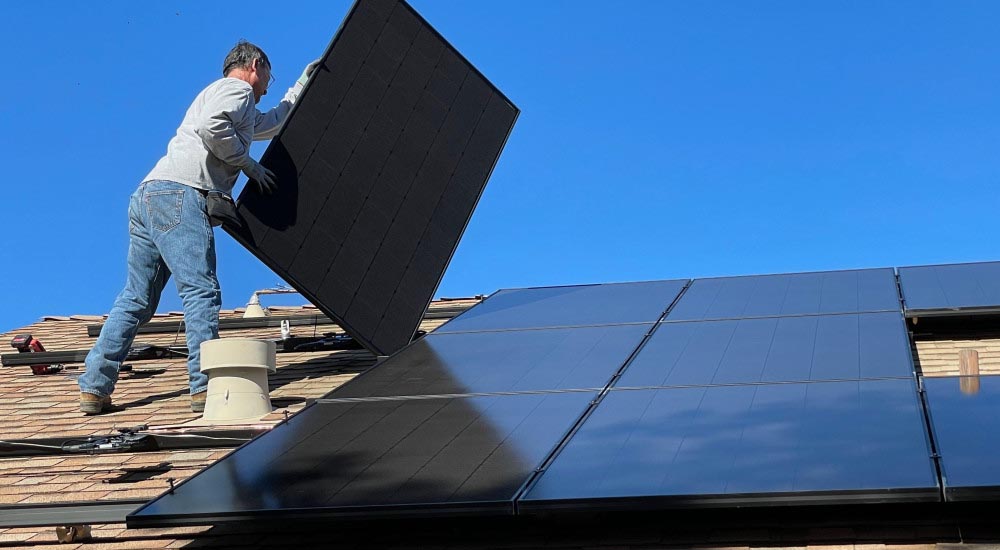
DIY solar panel building regulations for home
Regardless if you hire an installer or you carry out a DIY home solar systeminstallation, your solar panel installation needs to follow the standard UK building regulations for your area.
These regulations typically are:
1. Ensure that your roof is strong enough to support your panels
2. Mitigating the risk of fire your solar panels pose.
3. How to install your solar components correctly to give them improved ventilation.
4. Ensuring the entry points of your cables don't allow moisture into the structure.
5. Improving the electrical safety of your installation.
6. How to mount your panels and other components securely.
For more information on the Building regulations for your area, visit the links below:
England And Wales - http://www.opsi.gov.uk/revisedstatutes/acts/ukpga/1984/cukpga_19840055_en_1
Scotland - https://www.legislation.gov.uk/ssi/2004/406/contents/made
Northern Ireland - https://www.legislation.gov.uk/nisr/2000/389/contents/made
Do I need permission for solar panels?
Sometimes you do and sometimes you don't. Let me explain why.
Most of the time, if your panels meet certain criteria and standards, you don't need to obtain planning permission to install solar panels on your property.
However in some special cases, which will be listed below, you need to obtain planning permission before installing your panels:
1. If your property is a listed building.
2. If you live in an area designated as a conservation area.
3. If you are going to carry out any major modifications on the building. For example, an increase in size.
4. If your solar panels protrude more than 0.2 metres or 20 centimetres from your roof. For example, an installation on a flat roof is typically more than 0,2 metres due to the angled stands.
5. If you are carrying out a ground installation with stand-alone panels that is/are:
a. More than one panel
b. Taller than 4m
c. Located within the grounds of a listed building
d. Each panel has an area of more than 9m^2
If any of the above cases apply to you, do not worry. You can still apply for a special planning permission from your local authority.
To summarize, if the DIY installation of your solar panel system doesn't involve any major changes to the building – such as changing its size, shape, exterior appearance or other aspects, you likely won't need special permission from your local authority.
However, if you want to make some big changes, you might need to get planning permission from your local authority before installation. We highly recommend checking in with your local authority to see if there are any other regulations to follow regarding independent energy generation.
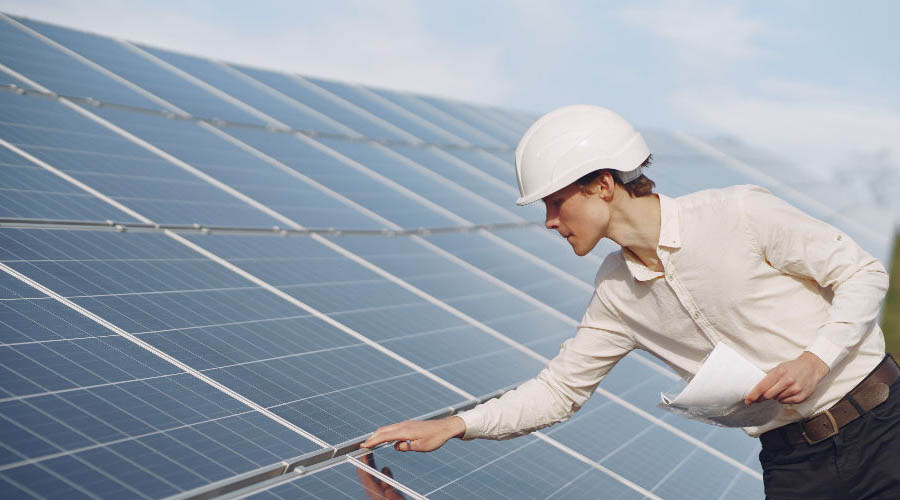
Monitoring and Maintenance for DIY solar
A DIY solar system needs regular monitoring and maintenance to ensure that it keeps performing safely and at the highest levels. Fortunately, the level of maintenance your solar system needs is on the low-side. So it won't take much of your time or effort.
Examples of monitoring and maintenance activities for DIY solar are:
1. Dusting and washing your solar panels when they're dirty.
2. Checking the tightness of all screws, bolts, and connections and tightening any loose items. This should be done regularly.
3. Dusting and cleaning the environment of your inverter(s), batteries, etc. at least twice a month.
4. Frequently check if the cables and components are operating at their optimal temperatures.
Failure to follow all maintenance guidelines might damage your solar system, pose health risks to you, or void your warranty.
We highly recommend you bring any faulty Renogy equipment to us or a licensed professional for repairs. Attempting any DIY repairs is often a recipe for disaster, voiding warranties, or causing further damage.
Related articles:
How to Properly Size a PV System
How Much Are Solar Panels? | 2023 Guide UK
Average Solar Panel Output Per Day: UK Guide







